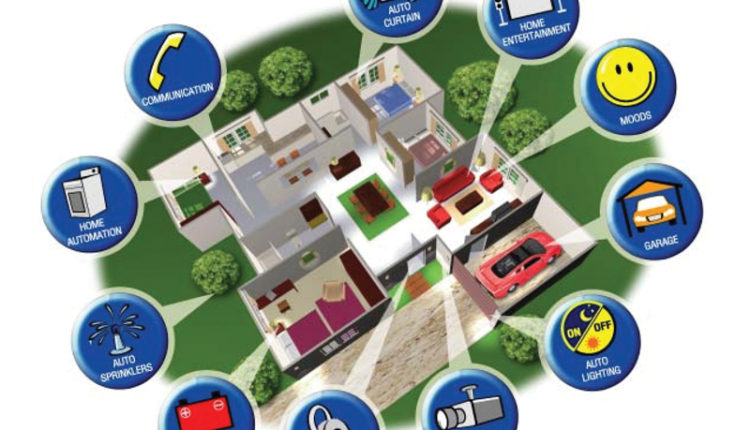 Home automation gives access to control devices in the home from a mobile device, anywhere in the world.
Home automation gives access to control devices in the home from a mobile device, anywhere in the world.
Home automation enables nearly everything to be remotely controlled viz lights, appliances, electrical outlets, heating and cooling systems. This also includes the alarm system and all of the doors, windows, locks, smoke detectors, surveillance cameras and any other sensors that are linked to it.
Home automation is a step toward what is referred to as the “Internet of Things,” in which everything has an assigned IP address, and can be monitored and accessed remotely.
The first and most obvious beneficiaries of this approach are “smart” devices and appliances that can be connected to a local area network, via Ethernet or Wi-Fi. Electrical systems and even individual points, like light switches and electrical outlets, are also integrated into home automation networks.
The two main characteristics of home automation are:
• Automation and
• Remote Control

Automation
Automation enables programming and scheduling of events for the devices on the network. The programming may include time-related commands, such as turning on or off, lights at specific times each day. Automation can turn on all the lights in the home when the security system alarm is triggered. The possibilities of home automation scheduling are unlimited.
Remote Control
The other main characteristic of cutting-edge home automation is remote monitoring and access. Smart phones and tablets give the home user the ability to connect to home networks.
Home automation systems make it possible for any Internet-connected device to view and control the system itself and any attached devices.
Monitoring apps can provide a wealth of information about the home:
- The current status
- Detailed history of what has happened up to now.
- The status of the security system
- Whether the lights are on
- Whether the doors are locked
- Temperature of the home and much more.
- View, in real-time, video feeds from surveillance cameras and observe what’s going on in the home while one is away.
Sensors can detect the temperature and when “things” (such as doors, drawers or even objects) are opened, closed, moved or change angles. A sensor placed near the front door would detect if the door’s been opened. This not only helps detect an intruder, but can also let a working parent know that their kid is home from school.
The software can even be used to send an alert if the child hasn’t come home by a certain time. It is also possible to monitor if windows have been opened or if someone left the garage door open. Systems can be programmed to send a text message or email whenever the Home security system registers a potential problem – be it severe weather alerts, motion detector warnings or fire alarms.
Manufacturers are creating more and more “smart” devices and appliances all the time. This makes the ‘possibilities’ for home automation, limitless.
Privacy and security issues
Homes are getting smarter and more connected, which is mostly a good thing. As these homes connect to the “Internet of Things,” it is necessary to become aware of privacy, security and safety implications. A hacker could breach the system.
Guidelines to follow when procuring the system:
- Procure the automation system from a reliable company with good security practices. There is no such thing as “perfect” security, but it is important to know how the company secures its products at the device level in the home, at the network level between the home and its servers and in “the cloud” where it stores data about the home.
- Segment the network – in the event the network is compromised, the ‘intruder’ doesn’t have access to the home PC or other devices that are used for work or may have client data on them
- Closely monitor the behaviour / traffic – the firewall or router, could be setup to e-mail report to the user on what the devices have been talking to on the internet.
- Deploy secure routers, good ISP provision and decent antivirus software.
Article by Kiron Kunte

Kiron Kunte has over 35 years of design and solutions experience, in Security, Telephony and Networking infrastructure. He is a graduate of IIT Bombay, a Fellow of the Institute of Engineers and has a post-graduate diploma, from Bombay University, in Systems Management. He is professionally certified in the design and engineering of Data Centres, IP Telephony, Video surveillance and Structured Cabling solutions. He heads Norik Konsult, a practice that offers advisory, design and system planning help to upgrade or build a new Telephony, Security and Networking infrastructure.
For more information contact:
www.norikkonsult.com

